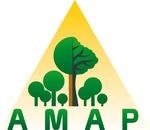Drivers of tree species richness in New Caledonian rainforests: beta- but not alpha-diversity makes them exceptional

IBANEZ Thomas, Post-doctorant à l'Institut Agronomique néo-Calédonien (IAC) et accueilli au laboratoire de botanique(AMAP)à l'IRD de Nouméa
New Caledonia has long been recognized as a global biodiversity hotspot. Rainforests of this tropical south-western Pacific island host more than 2000 vascular plant species with an endemism rate of about 80%. Most of past studies focused on the origin, evolution and diversification of this outstanding flora, but the distribution of its richness has been largely understudied given its high level of threat. In order to better manage and conserve this richness, we need to improve our knowledge of its spatial patterns and its environmental drivers. The New Caledonian Plant Inventory and Permanent Plot Network (NC-PIPPN) offers new research perspectives. This network encompasses more than two hundred 20 m x 20 m plots as well as ten 100 m x 100 m fully mapped plots and gathers a total of more than 35 000 inventoried trees. Here, we investigate how tree species richness is structured and distributed and ask which drivers make it so exceptional. We showed that despite an unusual de nsity of trees per hectare, species richness (alpha-diversity) was relatively low in comparison to other tropical rainforests. In contrast, between-plot dissimilarity of species assemblage (beta-diversity) was very high despite a large distributional range of tree species. Apart from a clear influence of edaphic constraints, we did not found a strong environmental driver explaining variations in alpha or beta diversities. This result plaids for a stochastic (or neutral) rather than deterministic (or niche-based) origin of the observed pattern of tree diversity.


